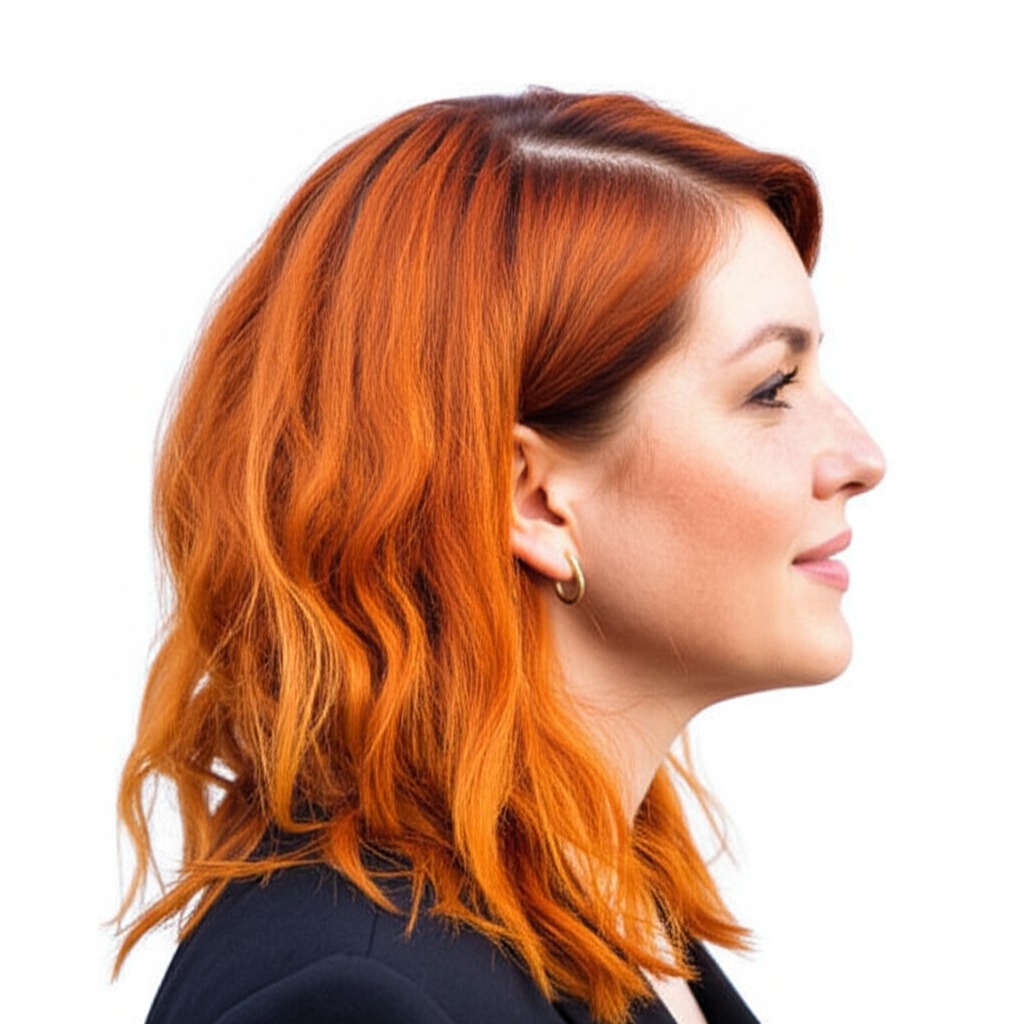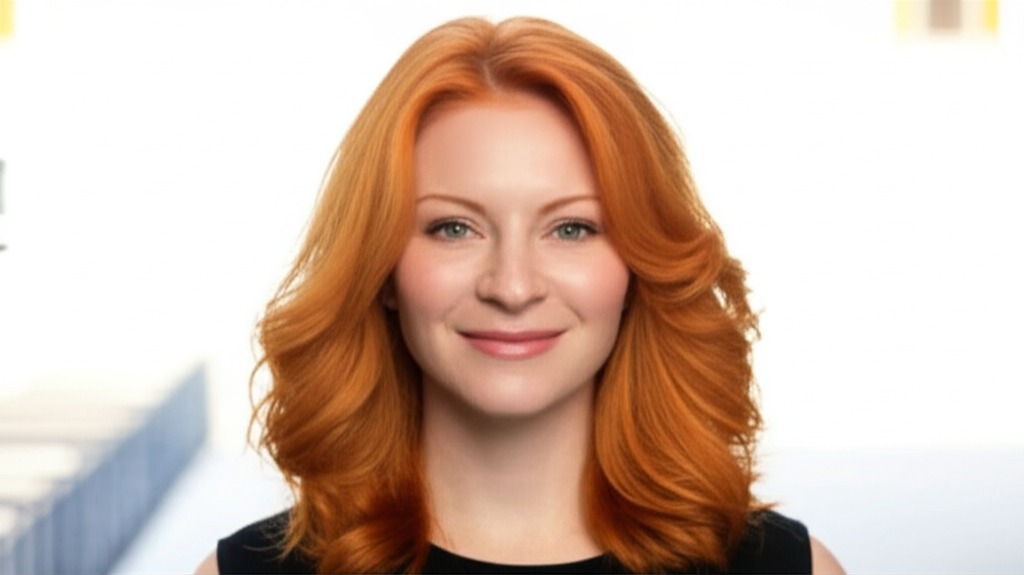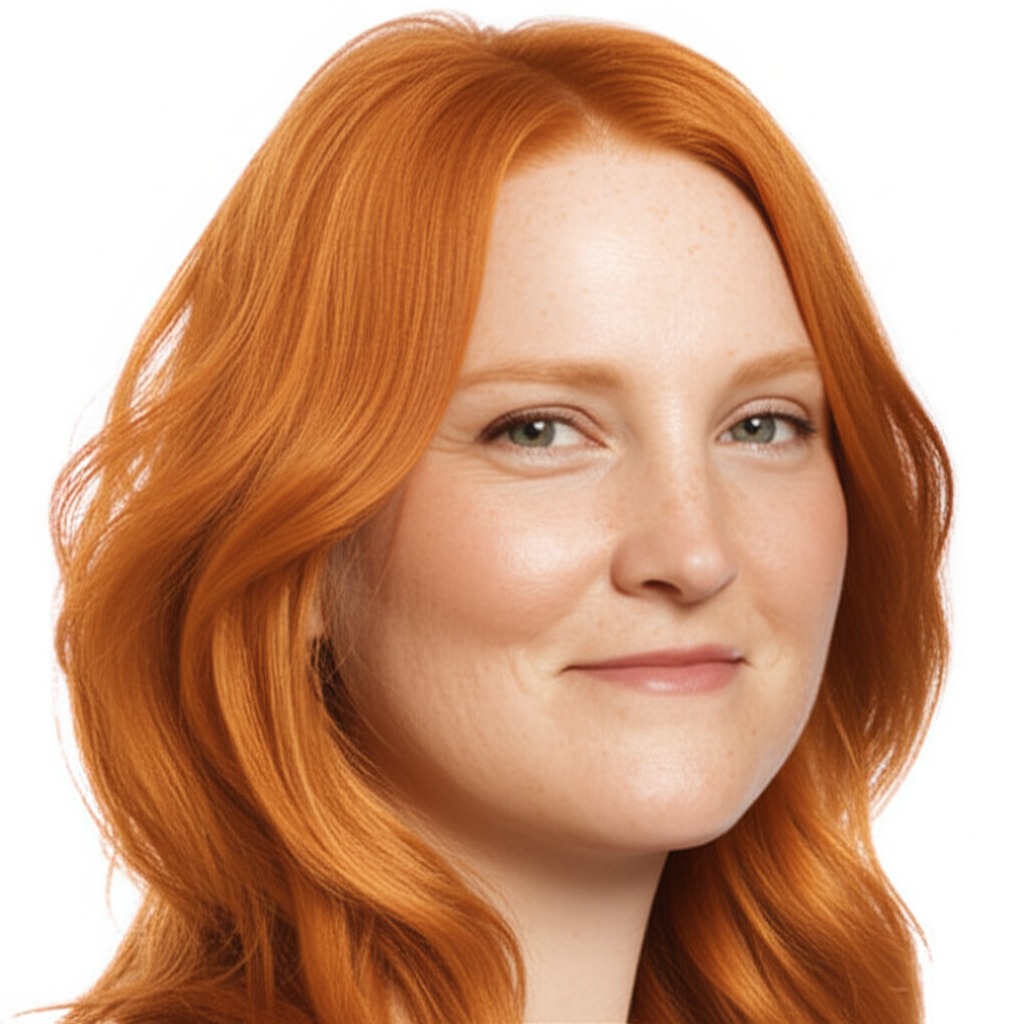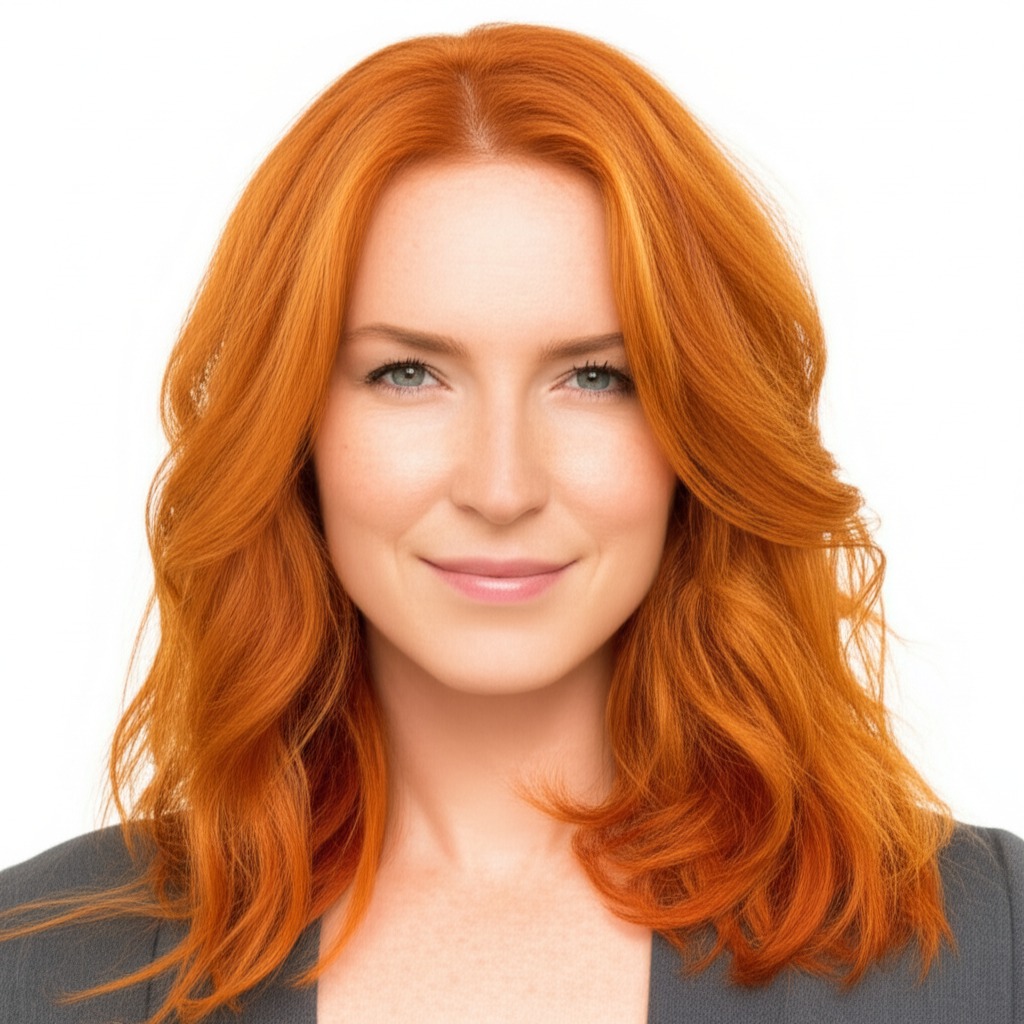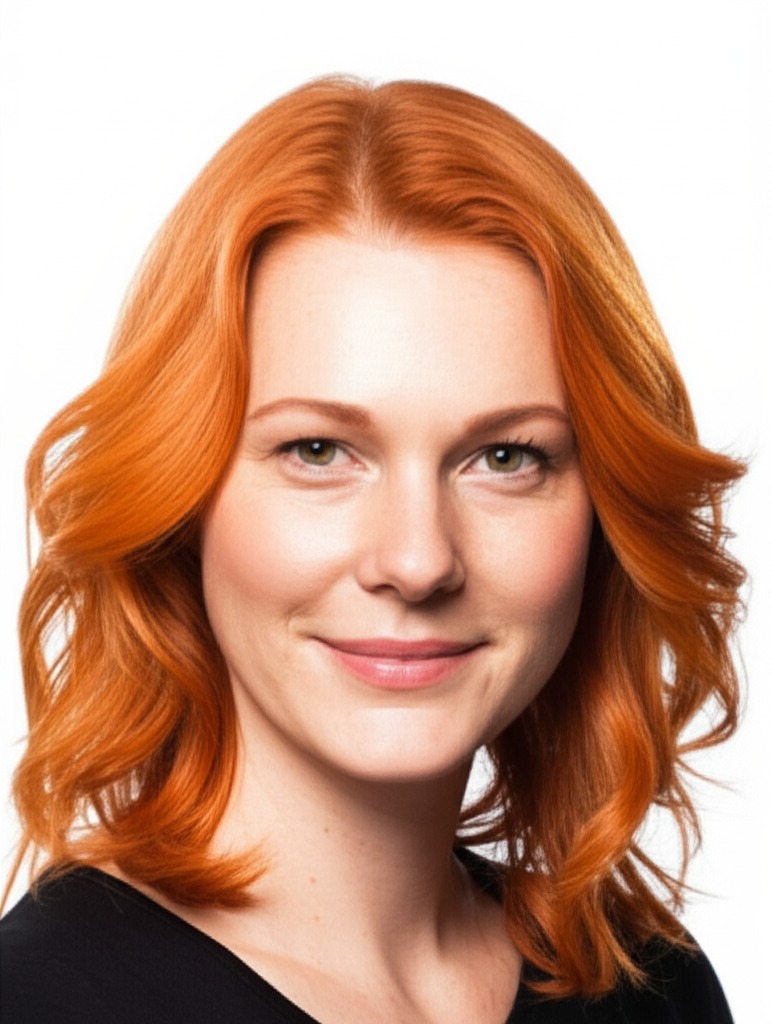#Embracing the Ember Glow: A Guide to Ginger Hair Color
Ginger hair – think fiery sunsets, autumn leaves, and a touch of playful rebellion! It's more than just red; it’s an entire spectrum of warm tones that can transform your look. But achieving your perfect ginger requires understanding its nuances. This guide will break down everything you need to know about rocking this vibrant shade, from choosing the right tone to keeping it looking gorgeous.
#1. Defining Ginger: Undertones & Depth
Ginger isn't a single color! It’s a family of shades built on warm bases. Understanding undertones and depth is key for finding your ideal match.
- Undertone: This refers to the subtle hue within the warmth.
- Warm Ginger: The most common, leaning towards golden or copper tones. Think bright, sunny red-oranges. These are often the easiest to achieve and maintain.
- Neutral Ginger: A blend of warm and cool – these shades have a more muted quality, avoiding extremes in either direction. They offer flexibility with different skin tones.
- Cool Ginger (Strawberry Blonde): Less common but stunning! These gingers possess hints of rose or violet, creating a softer, almost pastel effect. They require careful formulation to avoid brassiness and often work best on cooler skin tones.
- Depth (Levels): This refers to how light or dark the ginger is. Hair color levels range from 1 (black) to 10 (lightest blonde). Ginger shades typically fall between Levels 6-9, but can extend lower with darker bases.
- Level 6-7: A deeper ginger, often described as auburn or copper red. Great for those wanting a more subtle change from their natural color.
- Level 8-9: A brighter, lighter ginger – the classic "fire engine" red!
#2. Who Does Ginger Flatter?
While ginger can be stunning on almost anyone, certain features amplify its beauty:
- Skin Tone & Undertone:
- Warm Skin Tones (yellow or golden undertones): These skin tones love warm gingers! The warmth complements their natural glow.
- Neutral Skin Tones: Can pull off a wider range of ginger shades, from warm to neutral. Experimentation is your friend!
- Cool Skin Tones (pink or blue undertones): Cool gingers (strawberry blonde) can work but require careful consideration and expert coloring to avoid washing out the complexion. Warm gingers can sometimes look too harsh against cool skin. A consultation with a colorist is crucial.
- Eye Colors: Ginger looks incredible with:
- Green Eyes: The warmth of ginger intensifies green eyes, creating a captivating contrast.
- Hazel Eyes: Ginger brings out the golden flecks in hazel eyes.
- Brown Eyes: Warmer gingers enhance the richness and depth of brown eyes.
- Natural Starting Level: The darker your natural hair color, the more processing (bleaching) it will take to achieve a vibrant ginger. Those with lighter starting levels (Levels 7-9) have an easier time reaching their desired shade.
#3. Technique Options: Finding Your Ginger Style
How you apply the color impacts the final look and maintenance.
- Single Process: A uniform application of color from root to tip. Best for covering grays or achieving a solid, even ginger tone on lighter bases.
- Highlights/Lowlights: Adding brighter (highlights) or darker (lowlights) pieces creates dimension and movement. Ginger highlights can be stunning!
- Babylights: Very fine, subtle highlights that mimic the natural sun-kissed effect of childhood hair. A softer, more blended ginger look.
- Gloss/Toner: Used after coloring to refine the tone (e.g., adding warmth or coolness) and boost shine. Essential for maintaining your ginger's vibrancy.
- Balayage-Effect: Hand-painted highlights that create a natural, gradual transition of color. Offers a low-maintenance, blended ginger look with soft roots.
- Solid vs. Blended: A solid application offers boldness; blending techniques (balayage, babylights) give a more lived-in feel.
#4. Maintenance & Longevity: The Real Talk
Ginger fades! Here's what to expect:
- Wash Frequency: Limit washes to 2-3 times per week to preserve color vibrancy.
- Toner Refresh: Expect toner touch-ups every 6-8 weeks, especially with lighter ginger shades or cool undertones.
- Root Growth Pacing: Discuss root smudging or shadow roots with your stylist for a low-maintenance look that blends regrowth seamlessly.
- Budget/Time Planning: Ginger color is moderately high maintenance. Expect salon visits every 6-8 weeks, and budget accordingly (typically $150-$400+ per visit). At-home touch-ups can save money but require skill and knowledge.
#5. Seasonality & Pairing with Cuts: Ginger Through the Year
- Spring/Summer: Lighter, brighter gingers (Levels 8-9) shine in warmer months.
- Autumn/Winter: Deeper, richer gingers (Levels 6-7) complement cooler tones and cozy textures.
- Popular Cuts & Ginger:
- Bob/Lob: A sharp bob or lob highlights the vibrancy of ginger hair.
- Long Layers: Creates movement and dimension with a softer ginger look.
- Pixie Cut: Bold and playful – perfect for showcasing a vibrant, short ginger style.
#6. At-Home Care: Protecting Your Investment
- Sulfate-Free Shampoo & Conditioner: Sulfates strip color! Invest in gentle, sulfate-free formulas specifically designed for colored hair.
- Clarifying Cadence: Use a clarifying shampoo occasionally (once a month or less) to remove buildup but be mindful of potential fading.
- Heat Protection: Essential! Apply heat protectant spray before using any styling tools.
- Color-Safe Styling Tips: Avoid harsh chemicals and excessive sun exposure, which can fade color. Rinse with cool water after washing to seal the cuticle.
- Product Checklist: Sulfate-free shampoo & conditioner, color-safe heat protectant, leave-in conditioner (for moisture), hair oil (to add shine).
#7. Common Pitfalls: Avoiding Color Mishaps
- Brassiness: Copper tones can develop over time due to oxidation. Use a violet or blue toning gloss to counteract this.
- Banding: Uneven color application, often caused by improper bleaching techniques. Requires professional correction.
- Patchiness: Occurs when the color doesn't lift evenly across the hair. Ensure even product distribution and proper processing time during coloring.
#8. Pros & Cons: Weighing Your Options
Pros: Vibrant, eye-catching, complements many skin tones, adds warmth and personality. Cons: High maintenance (fading!), potential for brassiness, requires regular salon visits, can be expensive.
#9. Salon Consultation Script: Setting Expectations
Before you commit to ginger hair, have a thorough consultation! Ask your stylist these questions:
- "What shade of ginger would best complement my skin tone and undertone?"
- "How much processing (bleaching) will be required based on my natural color level?"
- "What is the expected maintenance schedule for this color?"
- "Can you show me examples of different ginger shades and techniques I might like?"
- “What products do you recommend to maintain my ginger hair?”
#10. FAQs: Your Ginger Questions Answered
- Can I go ginger if I have dark brown hair? Yes, but it will require significant bleaching, which can impact hair health. A consultation is crucial.
- Will ginger make my teeth look yellow? Very bright gingers can sometimes create this effect on some people. Opting for a slightly deeper or more muted shade can help.
- How long does ginger color last? Typically 4-6 weeks before noticeable fading, requiring toner touch-ups.
- Can I tone my ginger hair at home? Yes, but it’s best to start with professional guidance and practice on a small section of hair first.
- What if my ginger turns too orange? Use a blue or violet toning gloss to neutralize the warmth.
- Is ginger color damaging to my hair? Any chemical process can cause some damage, but proper care (heat protection, moisturizing) and regular trims minimize impact.
Embracing ginger hair is an exciting journey! By understanding these nuances and partnering with a skilled stylist, you’ll be radiating fiery confidence in no time.

